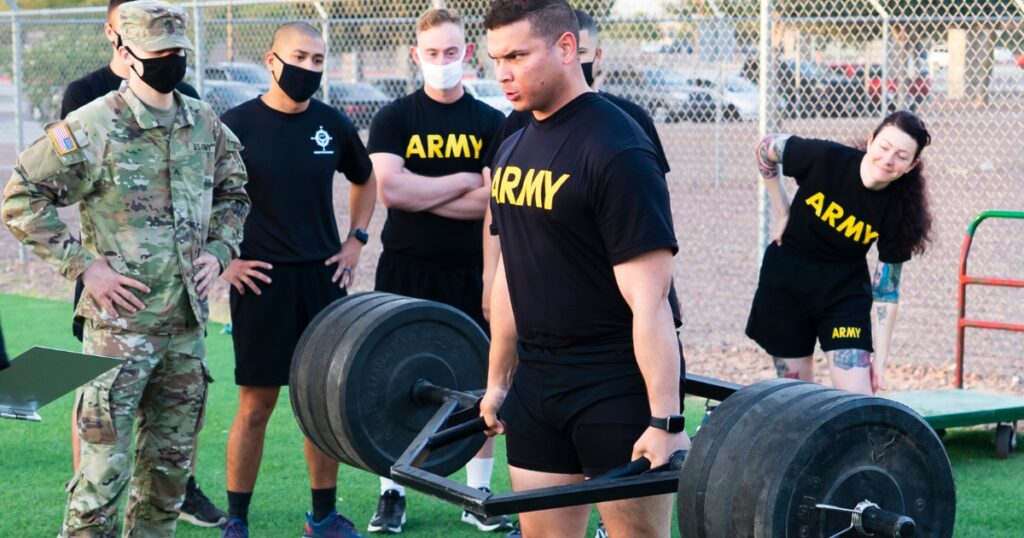
ACFT Calculator
Advanced Army Combat Fitness Test ACFT Calculator
ACFT Results
The Army Combat Fitness Test (ACFT) is the Army’s new physical test of record, a new way for the Army to determine how fit a soldier is. Now as the standard measure of soldiers’ combat fitness the world over, scoring well on the APFT is as much about fitness as it is about enlisting or keeping a job as a soldier. This is where the ACFT Calculator Tool can make a difference..
The ACFT Calculator is an advanced tool designed based on the official Army Combat Fitness Test statistics and was created to help users simulate and score their acft results. In this comprehensive guide, we will dissect how the calculator functions, what each score portrays, and how to use it to your advantage.
What is the Army Combat Fitness Test?
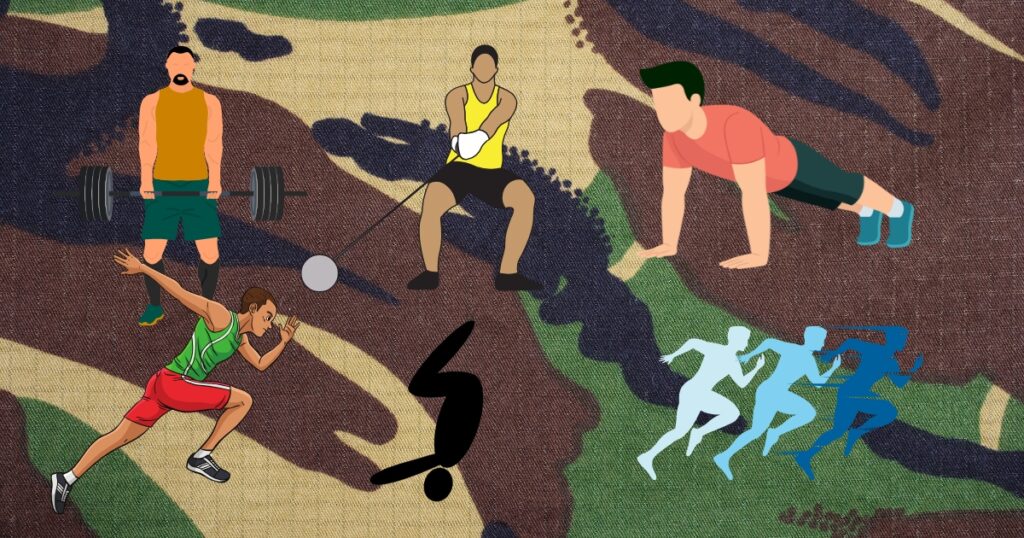
The ACFT is a six-event test used to measure the physical fitness of soldiers based on their performance in more physical warfare tasks. It replaced the Army Physical Fitness Test (APFT) in October 2020 and is designed to better measure components of fitness needed for combat.
The Six Events in the ACFT
- 3-Repetition Maximum Deadlift (MDL)
Measures lower body strength. - Standing Power Throw (SPT)
Assesses explosive power. - Hand-Release Push-Ups (HRP)
Evaluates upper body endurance. - Sprint-Drag-Carry (SDC)
Tests anaerobic capacity and muscular strength. - Leg Tuck (LTK)
Focuses on core and upper body strength. - Two-Mile Run (2MR)
Gauges aerobic endurance.
Each test is separately scored from 0 to 100, for a maximum total of 600.
Introducing the ACFT Calculator Tool
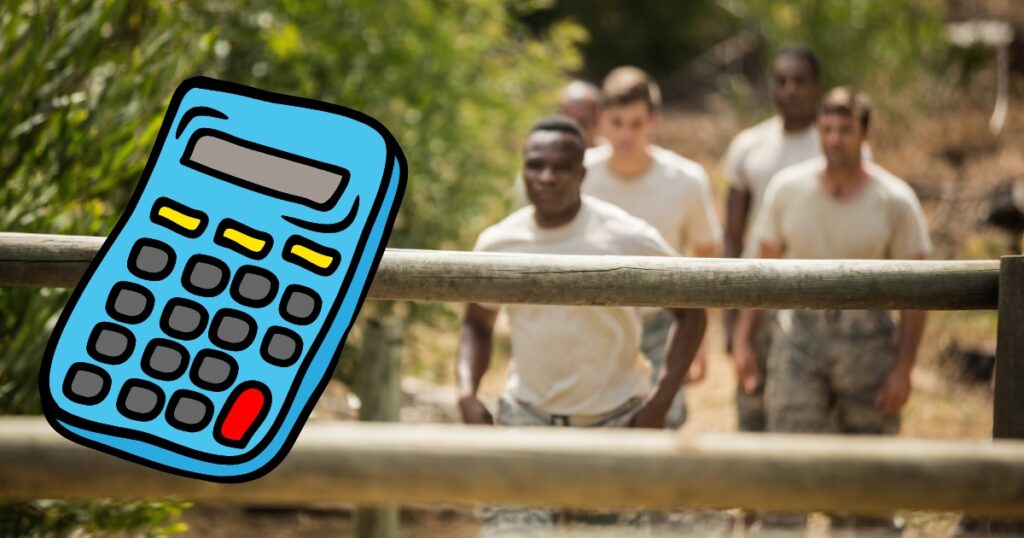
The ACFT Calculator is a quick, easy way to calculate your score: Simply input your performance measurements for each event and you will receive:
- A score Out of 100 points for each event.
- A composite passing score for the ACFT (out of 600 points).
- A performance-Bucket based on your absolute score.
- Visual status bars for a fast readout.
- A shareable score card for sharing results with trainers or friends.
Its a mobile-first, responsive tool that uses official scoring logic to make for a realistic campaign experience.
How the ACFT Calculator Works
You simply enter the relevant numbers for each event into the calculator. Calculates and displays your score based on preestablished scoring thresholds from ACFT standards.
| ACFT Event | Scoring Range (Input) | Maximum Points |
|---|---|---|
| Deadlift | 40–340 lbs | 100 |
| Power Throw | 4.0–12.0 meters | 100 |
| Push-Ups | 0–60 reps | 100 |
| Sprint-Drag-Carry | 210–80 seconds | 100 |
| Leg Tuck | 0–20 reps | 100 |
| Two-Mile Run | 1560–720 seconds | 100 |
The calculator automatically converts input values directly to scores based on functions taking into account that more of the same performance is required for the result to be significant as the score increases. It also gives a score of total and the level of performance with the scale:
| Total Score | Rating |
|---|---|
| 540–600 | Excellent |
| 480–539 | Good |
| 360–479 | Fair |
| Below 360 | Poor |
Key Features of the ACFT Calculator
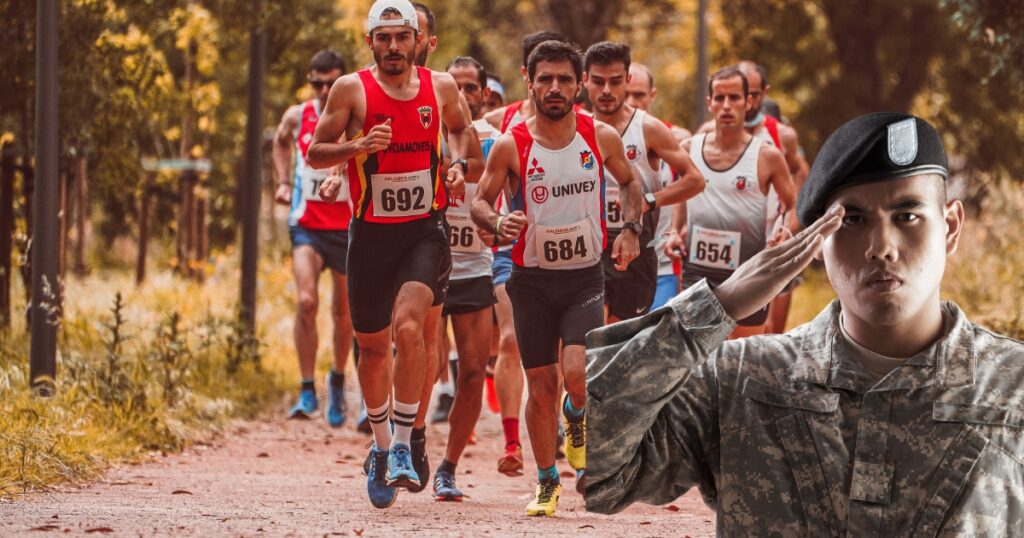
1. Real-Time Scoring and Feedback
It calculates the results as you type in the values. This gives you instant feedback on how you’re doing, allowing you to spot weak spots to work on.
2. Interactive Input Interface
Every performance input is linked to slider and number field that users can use in any way they want – ideal for users on mobile that own a desktop computer too.
3. Visual Performance Tracking
There are progress bars for each event on the results card. These visual stimuli make it easy to see at a glance how well you did, so you know where some extra training might be necessary!
4. Performance Rating System
After all event scores have been entered, the calculator provides a total score and strength level. This rating (Good, Excellent, Good, Fair, or Poor) is an easy goal for planning and setting goals for fitness.
5. Shareable Results
Using the built-in Web Share API, users can instantly share their scores. If a device doesn’t support it, the fallback option allows easy copying of results for email, chat, or social sharing.
Advantages of using the ACFT calculator
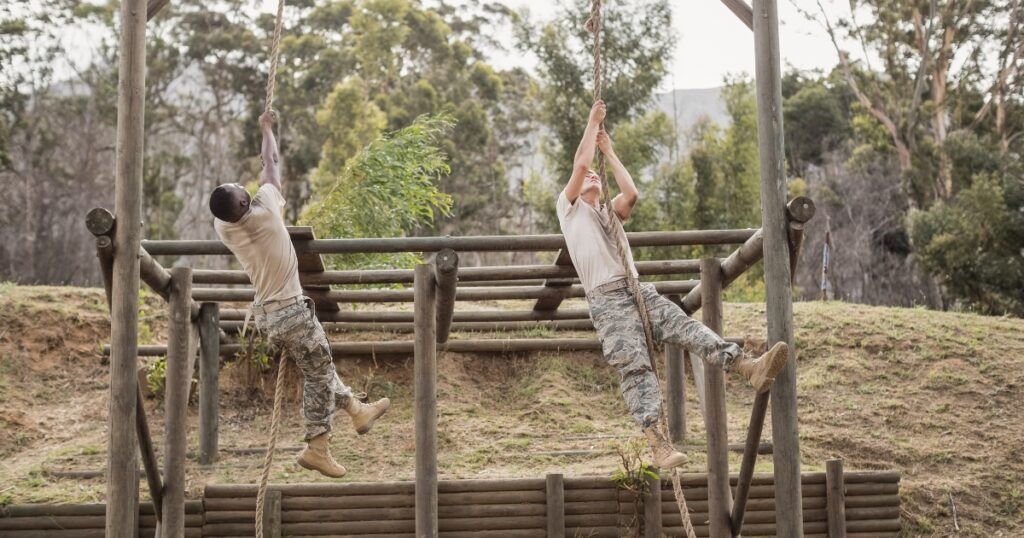
| Feature | Benefit |
|---|---|
| Accurate scoring logic | Get your scores in line with official ACFT scores tables |
| Mobile-friendly design | Use on-the-go during training sessions |
| Custom performance review | Tailor your fitness goals based on weak events |
| Time-saving interface | Calculate scores in under a minute |
| Trustworthy calculations | Uses consistent, transparent scoring methodology |
How to Use the ACFT Calculator Tool
Using this tool is intuitive and beginner-friendly. Follow the steps below:
- Submit your performance on each event as a slider input or text input.
- To see your results for all six events, click “Calculate Score.”
- See your total score and which questions you missed down at the bottom.
- Tap or click to share your score with friends or copy the link on your device to send via messages.
Scoring Methodology Breakdown
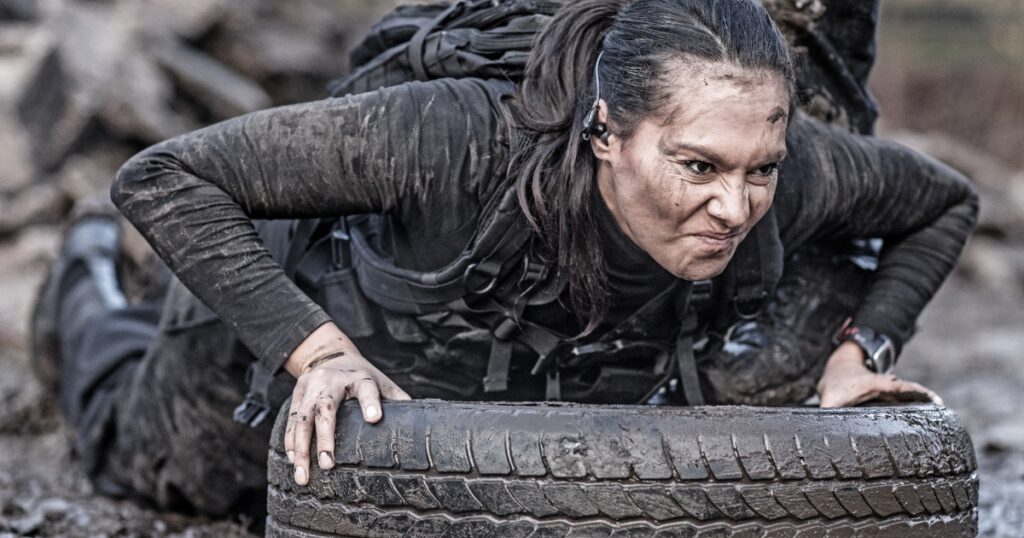
Each event has specific performance brackets that correspond to a score from 0 to 100. The ACFT Calculator simply uses a linear interpolation between min and max in order to produce a score.
For example:
- You deadlift 200 lbs, the rep range is 140 lbs (min) to 340 lbs (max), and you get a score using a variation of the following formula: Score = ((your weight – min) / (max-min)) * 100
This method is repeated for each event. Events like Sprint-Drag-Carry and Two-Mile Run are scored inversely—faster times result in higher scores.
Example Results Card Output
| Event | Score | Progress |
|---|---|---|
| Deadlift | 85 | ▓▓▓▓▓▓▓▓▓░░ |
| Power Throw | 90 | ▓▓▓▓▓▓▓▓▓▓░ |
| Push-Ups | 75 | ▓▓▓▓▓▓▓░░░ |
| Sprint-Drag-Carry | 65 | ▓▓▓▓▓░░░░░ |
| Leg Tuck | 80 | ▓▓▓▓▓▓▓▓░░ |
| Two-Mile Run | 70 | ▓▓▓▓▓▓░░░░ |
| Total Score | 465 | – |
| Performance Rating | Fair | – |
Who Can Benefit From This Tool?
- Active duty soldiers training for mandatory ACFT tests.
- New recruits or ROTC cadets wanting to get a sense of their fitness level.
- Fitness coaches who train clients in military prep programs.
- Veterans monitoring their health over the long term.
- Physical readiness standards Researchers and policymakers.
Reference Sources
- U.S. Army Training and Doctrine Command (TRADOC)
https://www.army.mil/acft - FM 7-22 Army Physical Readiness Training Manual
https://armypubs.army.mil/epubs/DR_pubs/DR_a/pdf/web/ARN20039_FM%207-22%20C1%20FINAL%20WEB.pdf - Department of Defense Human Performance Resources
https://www.hprc-online.org
Final Thoughts
The Army Combat Fitness Test isn’t going away. Whether you are trying to pass, excel, or crush the test, this is crucial. ACFT Calculator Tool brings an interactive, accurate, and fun way to learn about your fitness and move forward to being the future of military fitness.
Using it more often can help you chart your training focus, watch performance trends over time, and prepare yourself for whatever the Army—and life—has to throw your way.
FAQs On ACFT Calculator Tool
What is the Army Combat Fitness Test (ACFT), and why should I use an ACFT calculator?
The Army Combat Fitness Test (ACFT) is the Be the Best U.S. Army available fitness assessment for a soldier’s readiness levels for the three Physical Domains: Muscular strength and endurance, Cardiovascular endurance and Speed and Power. It contains six challenges, which were designed to recreate the conditions of actual fighting. ACFT score calculator The ACFT score calculator helps you get an estimate of your score, so you know where to improve next time. Say you are training for Basic or maintaining your readiness level, using the ACFT calculator will make your scoring way easier.
How does the ACFT calculator determine my score, and is it based on official Army standards?
Yes, the ACFT calculator based on scoring algorithms which closely conform to the Army’s official guidelines. Into the calculator, you’ll enter your event data — such as the weight you deadlifted, how many push-ups you did and how long it took you to cover two miles. The ACFT calculator combines your scores to give you an overall score out of 600 and a performance rating. This process helps to give you a realistic score estimate that is consistent with the present-day standards of the Army, therefore, you can trust the ACFT calculator to be helpful in your military preparations.
What total score should I aim for on the ACFT, and how does the ACFT calculator help?
The ACFT score calculator doesn’t just process the final number but also explains what that number even means. Any score below 360 is failing in all events, while a score higher than 540 is excellent. The ACFT calculator allows you to assess your event scores individually, and to determine your weak points to work on for the future. Whether you’re out for a basic pass or are striving to become competitive, the ACFT calculator provides you with a transparent and actionable view of your physical readiness.
Is the ACFT calculator mobile-friendly and easy to use on different devices?
Yes, the ACFT score calculator is mobile-friendly and can be used on desktop, tablet and mobile devices. Whether you are at home, in the field or at the gym you can receive an APFT score without even having to download an APFT calculator app. It has interactive sliders and input fields for each event so that you can input your data with ease and speed. The ACFT calculator is designed for speed, accuracy and mobility to provide a seamless experience on any device.
Who can benefit most from using the ACFT calculator?
The ACFT calculator is perfect for augmented soldiers and reservists, all the way down to ROTC cadets and military instructors and personal trainers. The ACFT calculator is for anyone getting ready for the Army Combat Fitness Test, whether you are worried about passing the ACFT, improving your score, or just staying in shape and building functional fitness. It’s particularly useful for individuals pursuing high scores, promotions or acceptance into elite Army programs. Thanks to its precise and easy-to-use interface, the ACFT calculator gives you the power to train smarter and get better results.
How often should I use the ACFT calculator during my training?
In order to maximize your results with the ACFT calculator, it’s best practice to utilize it frequently over the course of your training cycle—approximately every two to four weeks. One tool to help you follow progress, adjust your workout intensity, and keep you in line with your fitness goals, use the ACFT calculator on a regular basis. The ACFT calculator offers a quick comparative analysis of your strong and weak areas, which is helpful for progressive overload and programmed physical readiness planning.
FAQs On The Army Combat Fitness Test (ACFT)
-
Which military has the hardest fitness test?
The hardest military fitness test is a much-debated subject, but it certainly makes sense that elite forces that demand the most of their bodies have some of the most challenging physical tests. Of the conventional forces, the standard test for the United States Marine Corps is one of the hardest, involving pull-ups, crunches, and a 3-mile run. But the Army Combat Fitness Test (ACFT) is catching the eye for its full-body, functional, and varied six-event nature. An example workout — is a medley of the deadlift, sprint-drag-carry, and plank, to develop lower body power, strength, and endurance. As for difficulty, that will be subjective to the individual and their level of fitness, but the ACFT is proving to be a huge step up from previous tests and on par with many international fitness assessments.
-
How fast do you have to run a mile to be a cop?
Each of those 1 in 5 officers’ agencies could meet the challenges that PEACE Tactics set if the candidates were simply able to run 1.5 miles in an average time range of 12-14 minutes (somewhere between an 8-9 minute mile). This standard is not actually a component of the Army Combat Fitness Test (ACFT) but it does serve as a nice marker for overall cardiovascular preparedness. Standards vary by age and sex, but most departments seek to test an applicant’s ability to react to a physically uncomfortable situation. But rather than the ACFT which includes six separate events, police fitness testing tends to be more about endurance and short-distance running. Specific agency requirements need to be reviewed, as federal and local tests can vary greatly.
-
What is the passing score for the ACFT?
A passing score on the Army Combat Fitness Test (ACFT) consists of at least 60 points in each of the test’s six events. That is a combined 360 out of 600 points to pass. Scores are calculated individually for each event and involve tests of strength, power, and endurance such as the deadlift, sprint-drag-carry , and two-mile run. Evaluation is age- and gender-neutral, although the Army periodically updates its standards. The ACFT is a test of a soldier’s ability to do critical combat tasks. Those in more physically demanding jobs or eligible for promotion may need to serve longer to attain higher scores.
-
How many pull-ups for the Army?
The new Army Combat Fitness Test (ACFT) does not include pull-ups. Previously specific assessments or courses, such as Ranger School, or Airborne training, for example, mandated pull-ups as entry standards. So the ACFT (short for Army Combat Fitness Test), which is based more on functional strength with events such as the deadlift, hand-release push-ups, and the sprint-drag-carry, is in some ways even harder. Today, the move is toward functional strength. That said, pull-ups remain important for soldiers preparing for elite units or roles in special operations, where upper body strength is key. Although not a scored ACFT event, adding pull-ups to regular physical training may enhance performance and readiness for the more advanced physical challenges the Army can present.
-
Is the ACFT hard?
The ACFT is so hard because it measures a broad range of physical capabilities: strength, endurance, power, and agility. Featuring six different events — the deadlift, standing power throw, hand-release push-ups, sprint-drag-carry, plank, and two-mile run — the Y test challenges soldiers to achieve a well-rounded fitness, officials said. Toughness varies from one person to the next, but the test is challenging even for experienced soldiers. To perform well, you need to train specifically for each event. Hard though it may be, the ACFT is more in line with the physical demands of contemporary warfare, and therefore, is more effective at preparing soldiers for duty.
-
How many push-ups for Army PT test?
Under the old Army Physical Fitness Test (APFT), soldiers could pass with as few as 42 push-ups in 2 minutes, depending on their age and gender. However, the hand-release push-up was replaced by the ACFT for muscular endurance and movement control. During this physical event, soldiers will perform as many repetitions as possible in two minutes of push-ups, while raising their arms and removing their hands from the ground between repetitions. There is a finer-grained scoring where repetitions are counted more or less, better or worse. Although classic push-ups are valuable in training, the hand-release complements military physical tasks better.
-
Is the ACFT better than the APFT?
For several reasons, the ACFT is probably superior to the APFT for the simple reason that it measures overall fitness not just endurance. Whereas the APFT only assessed push-ups, sit-ups, and a two-mile run, the ACFT includes six events that measure strength, power, agility, and cardiovascular endurance. ACFT is a more realistic gauge of combat fitness. It minimizes injuries by stimulating diverse training and functional movements. “Many are more complicated measures but they represent military tasks more closely and they allow us to identify strengths and weaknesses a little more accurately than a gross measure like what APFT does.”
-
How do you pass the Army combat fitness test?
To pass the Army Combat Fitness Test (ACFT), Soldiers must score a minimum of 60 points on each of the six events: 3-repetition maximum deadlift, standing power throw, hand-release push-ups, sprint-drag-carry, leg tuck, and 2-mile run. Current training should encompass a well‐balanced combination of strength, endurance, and agility. Preparation should consist of resistance training, core work , and running. Tommy and Pat say it’s all about form and pace to keep one from getting penalized or hurt. The overall minimum passing score is 360 points out of 600. Soldiers must also know the event standards for their age and MOS to prepare for the event.
-
How many ACFT per year?
Active-duty soldiers must take the ACFT twice a year, and Army Reserve and National Guard soldiers must take the test annually. This periodicity maintains physical readiness throughout the year and provides a standard measurement tool for the force. Testing beyond that may be scheduled by units for remedial training or pre-deployment preparation. Year-round training is necessary for soldiers to remain ready, particularly due to the multidimensional focus of the ACFT. Continuous testing also enables leaders to track performance trends, assist with career development, and get an early sense of the need for any remediation-related training. The testing timetable synchronized with the Army’s desire to keep a fit and deployable force at all times, they said.
-
Do you do ACFT in basic training?
Yes, ACFT is applied during the Army basic training for new recruits to “start strong” in the military by being prepared in terms of physical readiness. Recruits engage in a physical conditioning program to prepare for the test’s six events. They’re supposed to take a diagnostic test after a couple of months of training and pass a record ACFT before they graduate. The test informs trainees on what they need to work on and introduces trainees to the Army’s physical standards . Some events might be difficult for beginners, but instructors lead new airmen through progressively challenging training, ensuring that they are physically able to meet the minimum by the end. For beginners, instructors guide recruits through progressive training, making sure they are physically capable of meeting the minimum standards by the end.
-
Is the Army getting rid of the ACFT?
The Army has not formally decided to delete the ACFT (as of 2025), but conversations regarding the future of the test rage on. After feedback and pilot programs, the test has been tweaked several times, including replacing the leg tuck with the plank and updating scoring standards. Lawmakers and military leaders have argued over the test — its effects, its fairness, and the practicalities of it. The ACFT is still the current physical fitness test, but the Army continues to assess how the test is being implemented and could implement further changes. Members should continue to stay informed through official Army communications and remain up to date in their training to meet what could be changing fitness standards.
-
How long is the plank for ACFT?
By far the worst event in the ACFT is the plank hold in the ACFT, where an individual is told to sit in a forearm plank position for over 3-4 minutes, based on age and MOS. The base time for passing is 2 minutes and 9 seconds though extra points are awarded for longer holds up to about 4 minutes. This event replaced the leg tuck in order to offer an alternative, but just as effective, measure of one’s core strength. The muscular endurance and stabilization challenged by the plank are very important, as armed conflicts are often fought on unstable ground. Soldiers should practice their core workouts regularly, to increase their Plank time and enhance ACFT performance. The form is important to remain eligible for lifting. form is essential to avoid disqualification.
-
Is a 14 minute 2 mile good?
A time of 14 minutes for 2 miles would be a very strong performance for most soldiers, particularly young ones. The average time for most Soldiers to complete the ACFT 2.0 is 14 minutes. Some elite units, or younger male soldiers, might be required to run faster but, for most positions, 14 minutes signals robust cardiovascular endurance. Continuous training and pacing correctly can help improve this time — especially for people hoping to attain high ACFT scores or meet parameters for more physically arduous military occupations.
-
How long is the 1.5 mile run in the Army?
Currently, there is no 1.5-mile run in the Army’s standard fitness test — but a 2-mile run instead to measure aerobic endurance. But the run is also a staple in fitness assessments in other military branches and among law enforcement officers. An average between 11 and 13 minutes for soldier and recruit is the desirable 1.5 mile run time. This is “at pace” for good conditioning and in preparation for the longer run event of the ACFT. Intervals of 1.5-miles can also help train for speed and endurance that can be developed to run the full 2-mile distance in the ACFT.ACFT run. Practicing 1.5-mile intervals can help soldiers build speed and endurance for the full 2-mile distance required during the ACFT.
-
Is 5 miles in 35 minutes good?
Yes running 5 miles in 35 minutes is very good, and is 7:00 per mile pace. The new Army Combat Fitness Test (ACFT) is only a 2 mile run and like I said, that can easily be done at the pace I’ve maintained for 5 miles. This level of performance can be an asset to soldiers in combat arms or special ops units. It also demonstrates a good foundation of training in support of a whole ready military. Consistent long-distance training and pacing is crucial for maintaining such times injury-free.
-
What is the 2 mile standard for SFAS?
Typically, candidates in the SFAS program run the 2 miles in less than 14 minutes to be competitive. This is even more demanding than the overall Army Combat Fitness Test (ACFT) standard. SFAS values elite physical preparedness, and the 2-mile run is an early testing event for a potential candidate’s cardio baseline. It isn’t published – but the word around the campfire from past participants is, that the faster/stronger you’re able to crank out basic metrics such as the run, the further you’ll make it in the selection process. Getting into SFAS shape takes time and high-intensity work.
-
How long is the Ranger 2-mile run?
The Ranger Physical Fitness Test features a 2-mile run, which has to be completed within 15 minutes for men (a bit more for women, depending on the entry criteria). This is more difficult than the ACFT, where the minimum passing times are slower. Ranger School is meant to be culturally of a very high standard of physical fitness, and that the run is a filter to eliminate those with subpar stamina. Candidates, aside from running two miles, are required to do push-ups, sit-ups and other physical activities. Training for Ranger should be primarily speed, distance, and mental toughness to eat all the cycles.
-
How fast should a 30 year old run 2 miles?
The minimum standard for a 30-year-old Soldier to pass the 2-mile run event in the ACFT is about 18 minutes. But the pace could be faster — like 15 minutes or less, depending on MOS or fitness aspirations. The associated standards are age-adjusted so as not to penalize female soldiers, while penalizing men, and keep the scale gender-neutral, encouraging a high level of cardiovascular fitness for all soldiers. Including receiving regular interval training, staying hydrated, and recovery methods to get better in the end. Those looking for promotions or to score high marks on physical tests for elite units can use faster run times to get an edge.
-
How fast can the average soldier run a mile?
The average Soldier runs a mile in 7-8 minutes, depending on fitness level, age, and MOS. For the ACFT, this place would yield a 2-mile run time of 14 – 17 minutes. Soldiers in combat arms or elite formations tend to run faster, due to the greater physical requirements. The Army promotes frequent cardiovascular exercise so that soldiers can maintain their fitness and consistently exceed the minimum requirements. Running time is one of the important parameters for overall fitness and to determine the fitness level of a soldier to be deployed on border or field.
-
How long does it take to run 3 miles?
It usually takes between 21 and 30 minutes to run 3 miles, depending on a person’s body weight and fitness level. Highly conditioned troops with good cardio can cover the distance in about 24 minutes or less. Although the Army Combat Fitness Test (ACFT) will only require a 2-mile run, preparation for longer distances will aid in stamina and pacing. Many special operations units and high-speed units use significantly longer runs in their training standards. Making 3-mile runs a regular part of a soldier’s workout can boost ACFT scores and endurance overall, especially when mixed with strength and agility workout.
-
How fast do you have to run a mile to be a cop?
The vast majority of police departments throughout the US want their applicants to be able to run 1.5 miles within 12 -14 minutes or some variation, so roughly an 8 – 9 minute mile pace. This is military time, a little slower than you might expect, but it still challenges aerobic fitness. Although not part of the ACFT, this standard can help both Soldiers and civilians assess how they’re prepared for careers in public service. Law enforcement fitness tests differ, so it is important to research your local or federal agency requirements. Cross-training for both ACFT and law enforcement training requirements provides versatility for job changes or interagency positions.
-
What is a slow mile time?
A mile time of more than 10 minutes is typically considered to be slow, particularly for young and healthy or active-duty soldiers. At this pace, a 2-mile run would clock in at 20 minutes, which would not meet the minimum passing score on an Army Combat Fitness Test (ACFT). Novices or those rehabilitating from injury may be able to run slower times, but the Armyman’s tendency to both focus builds their aerobic power on a regular basis. Performance can be improved with interval runs, nutrition, and consistency. It’s important to know your baseline mile so you can set fitness goals and even prepare for the ACFT or any military active duty fitness test for that matter.
-
How fast do you have to run 1.5 miles in the Navy?
For the Navy, it is typically between 10:30 to 13:30, give or take, due to variations in age and gender. This is for the Navy Physical Readiness Test (PRT), not the Army Combat Fitness Test (ACFT), which has a 2-mile run. While the distances of the run differ, the tests test cardiovascular conditioning and overall readiness. Military personnel who are interested in including themselves in inter-service transfers and joint tours are served by training to more than one standard. Throughout the services, anything below a 9:00/mile pace is generally sufficient, but the higher-level units will require a much faster time.
-
How much lap is 2 miles?
Two miles is 8 laps around an average 400-meter track. This is a common measurement used in Army Combat Fitness Test (ACFT) training to assist in pacing runs. 1-INCHES/FEET METRIC (LAP TRACKER) construction Wristband 1 1/2-INCHES/SECONDS Laps equal to mile-one-fourth of mile.Easily track laps to mile ratio cover. A track will also help you gauge time, adjusting pacing strategy as necessary. For best results, soldiers should time each lap and work towards running even split times – strengthening both stamina and speed over time. Working out on track and road conditions recreates genuine test scenarios and gets your body to the point where you can match or even exceed ACFT standards.
-
What is a perfect ACFT score?
A max ACFT score is 600, which means ding 100 perfect repetitions in each of the six test events. That’s maxing out performance in the deadlift, standing power throw, hand-release push-ups, sprint-drag-carry, plank, and a two-mile run. Getting to 600 is extremely rare and shows a level of physical fitness that is off the charts in strength, power, and endurance. A perfect score isn’t required for most jobs, but it can make a difference in promotions, competing for job assignments, and leadership reviews. A 600-point goal requires soldiers to follow a planned program training them in technique, recovery, and targeted improvements in every training event. Consistent monitoring of performance is also critical.
-
What happens if you fail ACFT?
If a soldier fails the ACFT with a score less than 60 in any category, they are allowed to retake the test after receiving training. Failure can result in counseling and have an affect on eligibility for a promotion, reenlistment, or specialized schools. Failing the ACFT can also delay graduations for new troops in basic training. The Army has some support programs, such as PRT, aimed at enhancing performance. Repeat failure after repeated retesting may have administrative consequences and even (in the extreme), physical separation. Staying in shape and working on their weaknesses regularly is very important to achieve success on the ACFT and continue to deploy.
-
Is 500 a good ACFT score?
Yes, 500 on the ACFT is excellent and puts a soldier healthily in the above-average category. A 500 would suggest the athlete did quite well at all six events and performed over expectations in places. This level of fitness is what we would expect from a soldier in medium leadership positions, in combat arms, or those being prepared for a promotion board or advanced schools. Very few meet that, however, so even a score around 500 is a reflection of disciplined training and physical readiness. Lay: “A soldier who scores 500 or more is an extremely tough and strong warrior with the stamina, strength, and mobility to go that extra mile in mission terrain and for mission success on the battlefield.
-
What is a 100 point 2 mile run?
To score a 100 on the two-mile run at the ACFT, a soldier must run the distance in a time that staff adjusts for age and scoring gender neutrals. For instance, a lot of younger male soldiers should be able to do two miles in 13:30 or under, while the standard is slightly relaxed for older ones. Hundreds take a load to your system the equivalent of double takes toll it thousands paid payday bear maximum load. Balancing point, how big a load can you carry, general question asked post start blog, how is a maximum load (not lifting weight) calculated with ramp test. Performance at this level characterizes fit individuals and candidates training for elite military programs. Running at this speed also assists in enhancing overall ACFT scores and prepares Soldiers for high-intensity field operations. Pace also helps improve overall ACFT scores and supports readiness for high-intensity field operations.
-
What is a 300 on the ACFT?
Most of the six events on the ACFT are worth 100 points each; 60 points per event is the minimum to pass, but as of last week, Soldiers were still given three years to pass the test. That lowers the minimum total to 360. I wouldn’t say that 300 is necessarily bad, it might be failing 2 events or 1 event is really bad. If such a score is received, soldiers must be retrained and retested. In contrast to the old APFT where a 300 was a max score, the ACFT uses a new score scale for modern combat fitness requirements. It is necessary to aim above 360 for basic compliance and, although levels of 450 and above are generally deemed to be excellent.
-
How many people max the ACFT?
“Maxing” the ACFT — that is, racking up all 600 points — is exceptionally rare. Exact numbers fluctuate and are not fully publicly reported, but Army data and anecdotal evidence suggest that only a sliver of soldiers manage perfect scores. Most soldiers rank between a 360 and 500 score — only the elite few score 550 or above. Those who max the test, meanwhile, are typically members of physically draining military occupational specialties (MOS) – such as infantry, special forces, or combat engineers. This level of performance takes concentrated, event-specific training, excellent recovery, and VERY, VERY good technique. Although rare, soldiers who score 600 on the ACFT are often unit fitness role models.
-
Is it hard to get a 600 on the ACFT?
Yes, getting a 600 on the ACFT is insanely hard so you would need to be incredibly strong, powerful, fast, and have an amazing endurance score on all 6 events. At either end is a small scoring window to rack up 100 points, which requires near-perfect form and maximum effort. Put bluntly, you cannot max the deadlift or two-mile run without hitting elite-level standards. Not many make it to this point and the ones who do generally adhere to strict training schedules, nutrition plans, and recovery methods. Obtaining a maximum score increases one’s potential for advancing one’s career and becomes a measure of a soldier’s physical rigor and readiness for use in combat.
-
What are the events of the Army Combat Fitness Test?
The six events in the Army Combat Fitness Test:
3-RM MDL – for leg strength.
Stand Power Throw (SPT) – measures the ability to exert force launching a mass from the body.
Hand-Release Push-Up (HRP) Tests upper-body endurance.
Sprint-Drag-Carry (SDC) evaluates the speed, agility, and muscular strength.
Plank (PLK) – assesses core stability and endurance.
2-Mile Run (2MR) – measures cardiovascular endurance.
Every single one of these is vital in evaluating full-body fight conditions. The test is gender-neutral, age-scaled, and fair to Soldiers while maintaining high physical readiness standards. Warriors who strive for excellence across all three areas of fitness will be ready to take on anything. -
How many events are in the new ACFT test?
The new ACFT comprises six events; the previous test was the three-event Army Physical Fitness Test (APFT). These are the six events: deadlift, power throw, push-up, sprint-drag-carry, plank, and a two-mile run. The elongated format is indicative of the Army’s adaptation to functional fitness, which focuses on overall body strength and levels of speed, agility, and endurance. The purpose of the tests is to simulate real combat tasks, such as lifting equipment, dragging casualties, and moving rapidly under load. Unlike its predecessor, the ACFT features performance-based scoring and introduces changes to scoring by age but not by gender. The six-event format guarantees soldiers are measured on a wider array of combat-relevant fitness.

Niraj Ghanghoriya is a tech-savvy content creator with a passion for building advanced online tools and writing in-depth, user-focused guides. With a strong focus on clarity, engagement, and SEO, he simplifies complex topics to help users make informed decisions.
